Recognize and treat common skin diseases in summer
(Baonghean.vn) - Summer weather is hot, humid and dusty, creating favorable conditions for skin diseases to develop. Skin diseases commonly found in the summer are rarely life-threatening, but the symptoms of itching and skin ulcers have a significant impact on the physical and mental health of the patient.
Hot summer weather causes the skin to sweat a lot, dirt sticks to it, easily leading to skin infections, itchy skin... The most common are skin infections caused by staphylococcus, streptococcus such as folliculitis, impetigo, boils...
Bacterial dermatitis and folliculitis
The disease can occur in any hairy skin area on the body. Symptoms are papules, pustules, lesions and crusts in the hair follicle neck. Infection can spread deeper into the entire hair follicle such as folliculitis. When the hair follicle is abscessed, it has developed into a boil, more severe is a carbuncle or cellulitis.
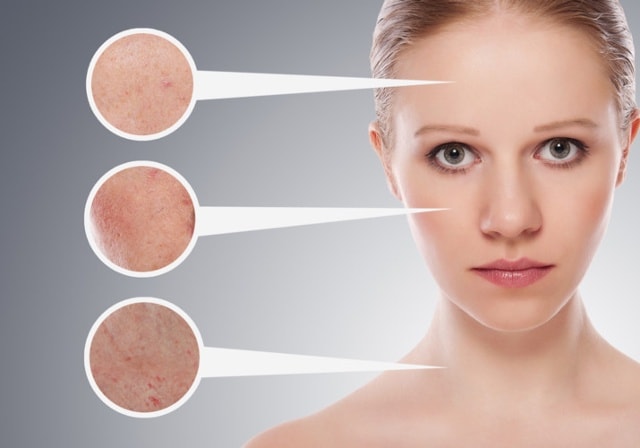 |
| Hot weather, lots of sweat and dirt clog pores, overactive sweat glands are the ideal conditions for bacteria residing on the skin to develop into dermatitis. Photo: Internet |
To prevent, you need to bathe, change clothes regularly, and ensure your skin is always dry and clean. You can also use antiseptic and antibacterial drugs.
Treatment for mild cases usually only requires topical medications such as antiseptic solutions: castellani, milian, antibiotic ointments such as fucidin, bactroban, fusidic acid... Severe cases may require oral antibiotics such as first and second generation cephalosporins, oxacillin, cloxacillin...
Viral dermatitis
Hot and humid weather is a favorable environment for viruses to develop. The disease often manifests acutely, requiring examination and treatment at the hospital to determine the virus causing the disease and use the correct medication.
Some skin diseases are caused by viruses such as chickenpox, shingles (caused by Varicella zoster virus), herpes (Herpes virus), hand-foot-mouth disease... The symptoms of chickenpox are single, concave blisters scattered all over the body. Shingles often manifests as clusters of blisters on red skin distributed along the path of peripheral nerves, accompanied by severe pain...
To treat chickenpox and shingles, people often use colored solutions such as Castellani, Milian to apply on blisters. Antiviral creams such as acyclovir can be used in the early stages. To treat systemic skin diseases caused by viruses, antiviral drugs such as acyclovir, valacyclovir, famciclovir, etc. can be used to reduce fever and pain if the patient has a fever and a lot of pain.
Pyoderma
The disease often occurs in the summer because the skin is always wet and sweats a lot, easily causing inflammation. Depending on the cause, they can cause disease in the superficial or deep layers of the skin. Based on the bacteria that cause the disease, people divide pyoderma into 2 groups: streptococcal pyoderma and staphylococcal pyoderma.
The most common causative agent is group A beta-hemolytic streptococcus, but most cases involve a mixture of streptococci and staphylococci. Pyoderma is common in people with poor hygiene and, if not treated and cared for properly, can spread rapidly to other healthy areas of skin.
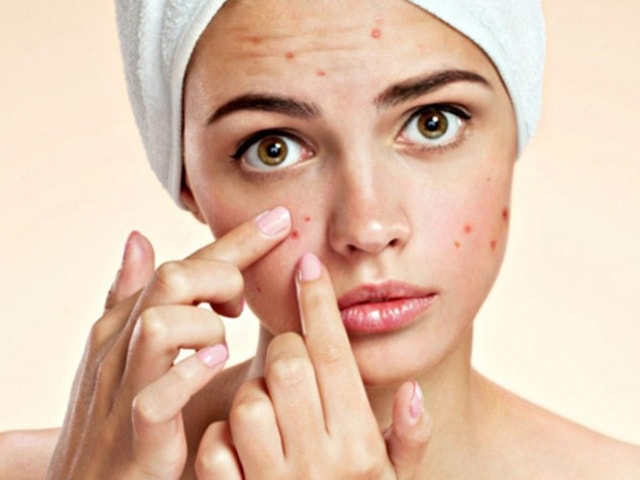 |
| This is an acute purulent infection and tissue necrosis in hair follicles caused by Staphylococcus aureus. Photo: Internet |
Treatment of pyoderma will mainly use a combination of topical and oral medications. In the case of local treatment of vesicular dermatitis, the patient will be prescribed antiseptic solutions in solvents such as betadine, iodine alcohol, etc.
In the case of treating generalized pustular dermatitis, the main method is to use macrolide antibiotics, antihistamines, vitamins B and C, and improve the body's condition.
Treatment of pyoderma with antibiotics is highly effective and heals quickly. However, if used for a long time, it can easily cause side effects such as drug resistance, drug allergies, etc. Therefore, patients should absolutely avoid buying medicine to treat pyoderma at home without specific instructions from a specialist.
Prickly heat
Prickly heat often appears in large patches in areas of the skin that secrete a lot of sweat such as the chest, back, forehead..., and sometimes in large intertriginous areas such as the armpits, groin, and even the whole body.
Favorable conditions for prickly heat to appear are high temperature, hot and humid microclimate, lack of ventilation, children wearing stuffy clothes, and infrequent bathing.
Symptoms are pink-red papules, with small blisters or white pustules mixed on top. The skin is inflamed, so the patient (usually children) feels restless, uncomfortable, and itchy. At that time, the more you scratch, the more the skin is damaged, making it susceptible to bacterial infection.
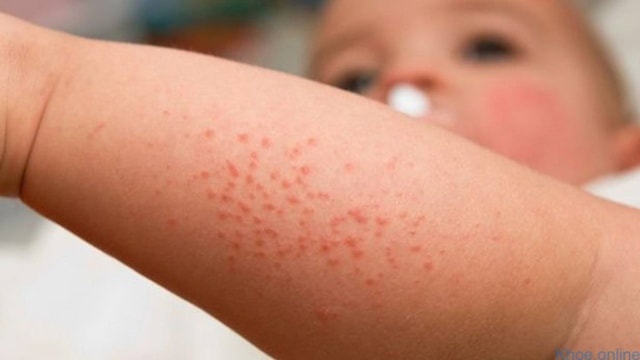 |
| The skin is inflamed, so the patient (usually children) feels restless, uncomfortable, and itchy. Photo: Internet |
The quickest way to get rid of prickly heat is to cool the skin and stop sweating. If your skin is cooled, the prickly heat will disappear quickly.
More severe forms of prickly heat require topical medications to reduce discomfort and prevent complications. Common topical medications include calamine lotion to soothe itching, and anhydrous lanolin to help prevent blockage of sweat ducts and stop new prickly heat from forming.
Useful herbal remedies for prickly heat can be used: vegetables and fruits with cooling properties such as bitter melon, dandelion, gotu kola, lemon... to eat and bathe. Note that when using these leaves, you need to wash them thoroughly before grinding, filtering or boiling water for bathing. Cooling drinks such as tapioca starch, orange juice, lemon... are also very good for eliminating prickly heat.
Hidradenitis
Excessive sweating is also the cause of apocrine gland inflammation, especially in children with symptoms of blisters, small papules, red skin in areas with many sweat glands such as the back, chest, forehead, neck. Patients often itch a lot, especially when the weather is hot and sweaty.
Treatment of apocrine hidradenitis is with a cream containing antibacterial and mild corticosteroids such as fucidin H, applied 1-2 times daily.
For children, you can bathe them with baby bath solutions such as lactacid, cetaphil... wear cool, airy, sweat-absorbent cotton clothes to help keep the skin dry.
Skin fungus
This is a very common skin disease in our country. The disease manifests itself in many different ways. Symptoms can appear on the skin, mucous membranes, hair and nails. The three most common types of fungal skin diseases are athlete's foot, jock itch and body fungus.
Athlete's foot is common in men, rare in women. Severe cases can be infected with bacteria with pustules, blisters, swollen feet, and fever.
Jock itch often appears in hot weather, in the summer, when you sweat a lot or wear wet clothes. Lesions often appear in the folds of the thighs. They are round spots with blisters on the edges and fewer blisters in the center.
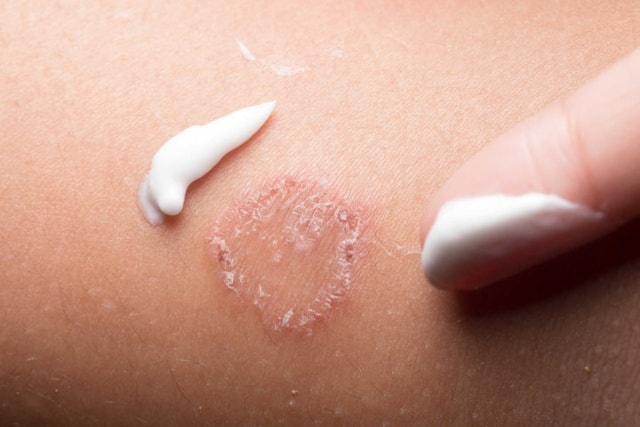 |
| Fungal lesions vary in size, severity and depth depending on each person's constitution and the fungus strain. Photo: Internet |
When infected with fungus, patients should not use antifungal drugs combined with corticosteroids because they can cause side effects such as skin atrophy, stretch marks, and create opportunities for the fungus to grow more. For small areas of fungal infections of the hands, feet, body, nails, and tinea versicolor, patients can use topical creams containing ketoconazole, miconazole, terbinafine, etc. for treatment.
In addition, it is necessary to follow the following instructions to both effectively treat and prevent skin fungal infections: Clean the skin after exercise, when sweating a lot in hot weather; Wash clothes and bedding regularly to kill disease-causing fungi; Do not share personal items with others to avoid spreading the disease.
Atopic dermatitis
The disease breaks out most often during the hot and dry season, because humidity and temperature are too high, easily causing the body to lose thermoregulation and circulation, creating a favorable environment for atopic dermatitis. One of the characteristics of this disease is itching, the hotter it gets, the more itchy it gets when scratched hard, uncontrolled scratching can easily cause ulcers and infections, making the disease worse.
Signs of atopic dermatitis are very diverse, it can be simply dry patches of skin with loss of pigmentation but can also be very severe such as red skin all over the body.
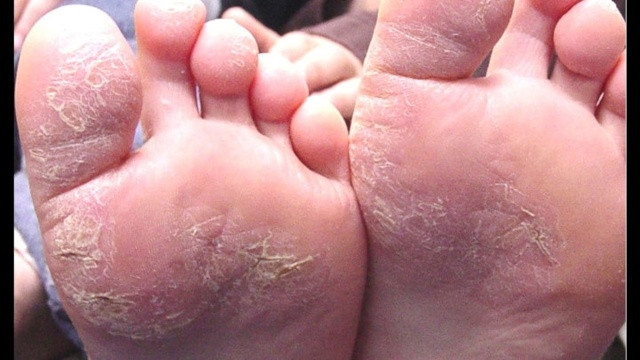 |
| Typical symptoms of the disease appear depending on each stage. Acute stage: there are circular red rashes, peeling skin, blisters and scales on the surface, surrounded by edema. Chronic stage: manifests with red papules, keratosis, peeling, skin pigmentation disorders. Photo: Internet |
Common triggers for atopic dermatitis are soaps, detergents, perfumes and cosmetics; chemicals such as grease or solvents; dust, cigarette smoke, dry weather, low humidity; after hot baths; skin infections, especially caused by staphylococcus aureus; sudden temperature changes...
Treatment of atopic dermatitis includes: skin care; finding and eliminating the cause or aggravating factors; and using anti-inflammatory drugs.
Skin care: Use emollients and moisturizers. Avoid contact with skin irritants such as soap, antiseptics, chemicals, cigarette smoke, alcohol, etc.
Foods that aggravate the condition should be eliminated. If dust mites are a cause, bed linens should be cleaned weekly and fans should be used to reduce humidity. New clothes should be washed before wearing to remove formaldehyde and other chemicals that may cause skin irritation from manufacturing and packaging.
Ngoc Anh
(Synthetic)
| RELATED NEWS |
|---|


